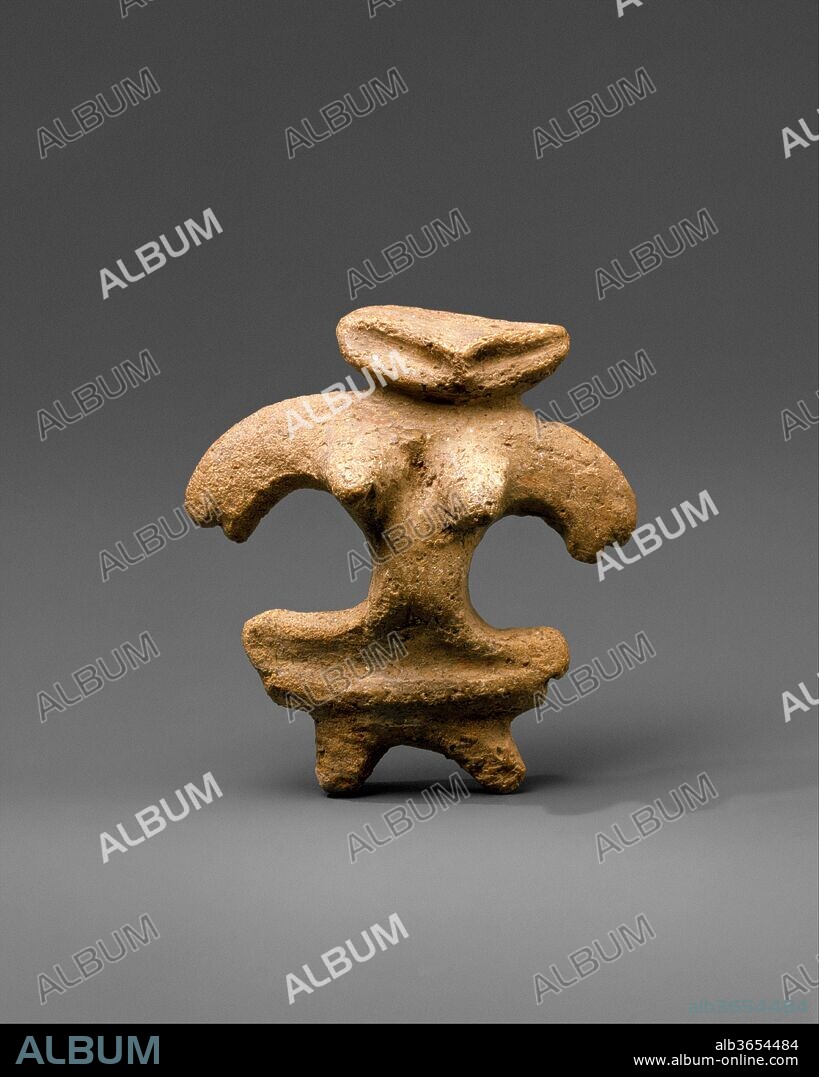alb3654484
Dogu (Clay Figurine)

|
Add to another lightbox |
|
Add to another lightbox |



Title:
Dogu (Clay Figurine)
Caption:
Dogu (Clay Figurine). Culture: Japan. Dimensions: H. 2 1/4 in. (5.7 cm); W. 1 7/8 in. (4.8 cm).
Clay figurines (dogu) of humans and animals were made throughout the Jomon period, particularly during the latter half, and establish the beginnings of Japan's sculptural tradition. The largest percentage of these figures, including this statuette from northern Honshu, comprises highly stylized females with enlarged breasts, hips, and stomachs presumed to have been fertility symbols.
Because some of these figurines appear to have been broken intentionally, it has been hypothesized that they were used in rituals meant to cure physical ailments. It seems that once the affliction was ceremonially transferred to the figure, the clay image was discarded. This speculation would explain why most dogu are found scattered around or in refuse heaps rather than in graves.
Technique/material:
EARTHENWARE
Period:
Final Jomon period (ca. 1000-300 B. C. )
Museum:
Metropolitan Museum of Art, New York, USA
Credit:
Album / Metropolitan Museum of Art, NY
Releases:
Model: No - Property: No
Rights questions?
Rights questions?
Image size:
3276 x 4094 px | 38.4 MB
Print size:
27.7 x 34.7 cm | 10.9 x 13.6 in (300 dpi)
Keywords:
 Pinterest
Pinterest Twitter
Twitter Facebook
Facebook Copy link
Copy link Email
Email

